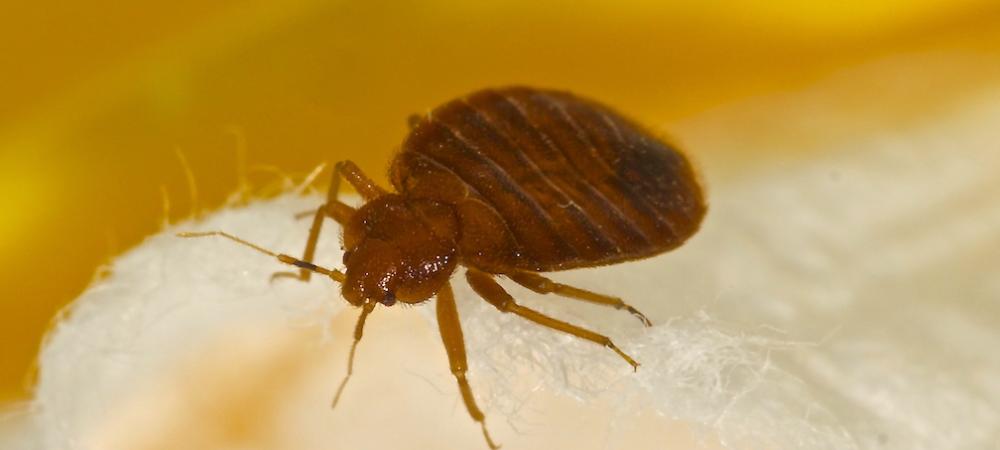Are Bed Bug Heat Treatments Effective in Rockaway, New Jersey?

Bed bug infestations have become an increasing concern in Rockaway, NJ, and their prevalence is on the rise. These pesky insects can quickly spread throughout homes and buildings, causing major disruption and discomfort to residents. Bed bugs are notorious for hitchhiking on clothing, bedding, and furniture, making it easy for them to move from one location to another.
One of the challenges with bed bugs is their ability to hide in hard-to-reach places. They can squeeze into cracks and crevices, making them difficult to spot and eliminate. This is why it is crucial to treat not only the affected room but also the surrounding areas to ensure complete eradication.
Moreover, bed bugs can easily spread through infested clothing and belongings. People often carry these tiny insects unknowingly from one place to another, leading to the infestation of new locations. Therefore, it is essential not only to focus on treating the rooms with visible signs of bed bugs but also to launder and treat clothing and other items that might have been exposed.
Benefits of Heat Treatments for Bed Bug Extermination
Bed bug heat treatments are an efficient and effective method for exterminating bed bug populations in Rockaway, NJ. There are several benefits to using heat treatments for bed bug extermination.
Firstly, heat treatments are extremely efficient. They can penetrate deep into furniture, mattresses, and other hard-to-reach areas where bed bugs often hide. The high temperatures used in heat treatments can kill bed bugs at all life stages, including eggs, nymphs, and adults, ensuring complete eradication.
Secondly, heat treatments are highly effective in eliminating bed bugs. Unlike chemical treatments, which may have limited success and require multiple applications, heat treatments provide a one-time solution. The hot air used in heat treatments acts as an insecticide, reaching lethal temperatures that bed bugs cannot survive. This not only eliminates the current infestation but also prevents future re-infestations.
Another advantage of heat treatments is that they are a non-toxic method of extermination. Unlike chemical pesticides, heat treatments do not involve the use of harmful chemicals that can pose health risks to humans and pets. Heat treatments are a safe and eco-friendly solution for bed bug removal.
Types of Heat Treatment Options
When it comes to eliminating bed bugs, there are several types of heat treatment options available. The most common heat treatments include thermal remediation, steam treatments, and heat chambers.
- Thermal remediation involves using specialized heating equipment to raise the temperature of an entire room or area to a level that is lethal to bed bugs. This method is effective in treating large spaces and is often used for treating infested apartments, hotels, and commercial buildings.
- Steam treatments involve using a high-temperature steam machine to treat infested areas. The steam effectively kills bed bugs by penetrating into cracks, crevices, and other hiding places. It is a more targeted approach and is often used for treating individual pieces of furniture or small infestations.
- Heat chambers are portable enclosures that are designed to heat-treat infested items. The infested items are placed inside the chamber, and hot air is circulated to reach lethal temperatures that eliminate bed bugs. This method is ideal for treating items such as mattresses, clothing, and electronics.
Overall, heat treatments offer effective and efficient solutions for eliminating bed bugs. By choosing the appropriate type of heat treatment option based on the extent of the infestation and the items to be treated, homeowners and pest control professionals can effectively eradicate bed bugs and prevent re-infestations.
Steps Involved in a Heat Treatment Process in Rockaway, NJ
Heat treatments are a highly effective solution for eliminating bed bug infestations in Rockaway, New Jersey. This method involves raising the temperature of the affected areas to a level that is lethal to the pests, ensuring their complete eradication. The heat treatment process typically involves several key steps to ensure that all areas and items are adequately treated.
Preparing the Home for Treatment and Moving Belongings Out of the Home
When it comes to bed bug heat treatments in Rockaway, New Jersey, proper preparation of the home is crucial to ensure the effectiveness of the treatment. Before the treatment begins, it is important to take the necessary steps to prepare the home and move belongings out of the affected area.
Preparing the home for a bed bug heat treatment involves a few key steps. First, remove all bedding, linens, and clothing from the infested rooms. These items should be placed in sealed plastic bags to prevent any bed bugs from escaping and contaminating other areas of the home.
Next, remove any clutter or unnecessary items from the affected rooms. This includes items such as books, toys, and electronics. Bed bugs love to hide in clutter, so removing these items will help expose them to the heat treatment.
Additionally, furniture should be moved away from walls to ensure that heat can circulate evenly throughout the room. It is also recommended to disassemble bed frames and remove drawers from dressers to facilitate the heat treatment process.
When moving belongings out of the home, it is important to treat them for bed bugs to prevent re-infestation. Carefully inspect all items for any signs of bed bugs or their eggs. Vacuum and steam clean items if possible, and store them in sealed plastic bags or containers.
Thorough preparation is essential for the success of a bed bug heat treatment. By following these steps and ensuring that belongings are properly treated and stored, Rockaway residents can effectively combat bed bug infestations in their homes.
Setting Up Equipment and Heating the Room to the Proper Temperature
Setting up the equipment and heating the room to the proper temperature for a bed bug heat treatment is a crucial step in effectively eliminating these pests. The process typically involves the use of electric-fed heaters, which are safe and efficient for this type of treatment.
To begin, the electric-fed heaters are strategically placed throughout the room to ensure thorough heat distribution. These heaters are equipped with high-powered fans to circulate the hot air evenly. It is important to position the heaters away from flammable materials and to follow all safety guidelines provided by the manufacturer.
The heaters are then connected to a power source, such as an electrical outlet, to supply the necessary energy for generating heat. Once the heaters are properly set up and connected, they can be turned on, and the room temperature can be increased gradually to the target level.
During the heating process, it is important to constantly monitor and maintain the desired temperature. This is typically achieved by using thermostats and temperature sensors to ensure that the room reaches and sustains the appropriate heat level for killing bed bugs and their eggs.
It is worth noting that some areas, including major cities like New York City and many towns and counties in New Jersey, have restrictions on the use of propane heaters for bed bug treatment due to safety concerns. Therefore, electric-fed heaters are often the preferred choice in such locations.
In conclusion, setting up equipment and heating the room to the proper temperature is an essential part of an effective bed bug heat treatment. By using electric-fed heaters and following safety guidelines, this method can successfully eliminate bed bugs and prevent re-infestation.
Monitoring Temperatures While Heating Up the Room
During a bed bug heat treatment in Rockaway, NJ, monitoring temperatures is crucial for ensuring effective extermination of the bed bugs. Here are the steps involved in monitoring temperatures while heating up the room:
- Set up temperature sensors: Place temperature sensors strategically in various areas of the room. These sensors will measure the temperature and provide real-time data.
- Use a thermostat: Connect a thermostat to the heaters to control and regulate the temperature. Set the thermostat to the target temperature necessary for killing bed bugs and their eggs.
- Continuously monitor temperature: Keep a close eye on the temperature readings provided by the sensors and the thermostat. This ensures that the room is reaching and maintaining the appropriate heat level throughout the treatment process.
- Adjust as needed: If the temperature deviates from the target level, make necessary adjustments to the heaters or thermostat to bring it back to the desired temperature. This ensures consistent heat exposure to effectively exterminate the bed bugs.
Monitoring temperatures is vital for several reasons. Firstly, it allows you to ensure that the room reaches the required temperature for bed bug extermination, as these pests are resilient and can survive extreme temperatures. Secondly, maintaining the correct temperature for a specific duration is necessary to kill not only adult bed bugs but also their eggs, preventing further infestations. Lastly, carefully monitoring temperatures guarantees the safety of the treatment process by avoiding overheating or any potential fire hazards.
In Rockaway, NJ, effective bed bug extermination through careful temperature monitoring during the heat treatment process helps rid homes and businesses of these pesky pests.
Inspecting the Room After Treatment is Complete
After completing the bed bug treatment in Rockaway, New Jersey, it is crucial to thoroughly inspect the room to ensure that the infestation has been effectively eradicated. This step is essential to confirm the success of the treatment and to prevent any reinfestations.
The exterminator should carefully examine the entire room, paying close attention to areas where bed bugs commonly hide, such as mattresses, furniture, and closets. By inspecting these areas thoroughly, any remaining bed bugs or eggs can be identified and treated accordingly.
During the inspection, the exterminator should look for specific signs of bed bug activity. These signs include live bugs, dead carcasses, fecal matter, blood spots, larvae, and eggs. Live bugs may still be present if the heat treatment was not sufficient or if there was a re-infestation. Dead carcasses, fecal matter, blood spots, larvae, and eggs are indicative of previous bed bug activity and can help determine the effectiveness of the treatment.
If any signs of bed bug activity are discovered during the inspection, additional treatment may be required to fully eliminate the infestation. It is important to address any remaining bed bugs promptly to prevent them from multiplying and spreading in the treated area.
In conclusion, inspecting the room after completing the bed bug heat treatment is crucial to confirm the success of the treatment and to ensure that the infestation has been fully eradicated. By carefully examining the entire room and looking for signs of bed bug activity, any remaining bed bugs or eggs can be identified and treated accordingly. Prompt action should be taken if any signs of bed bug activity are discovered to prevent further infestation.
